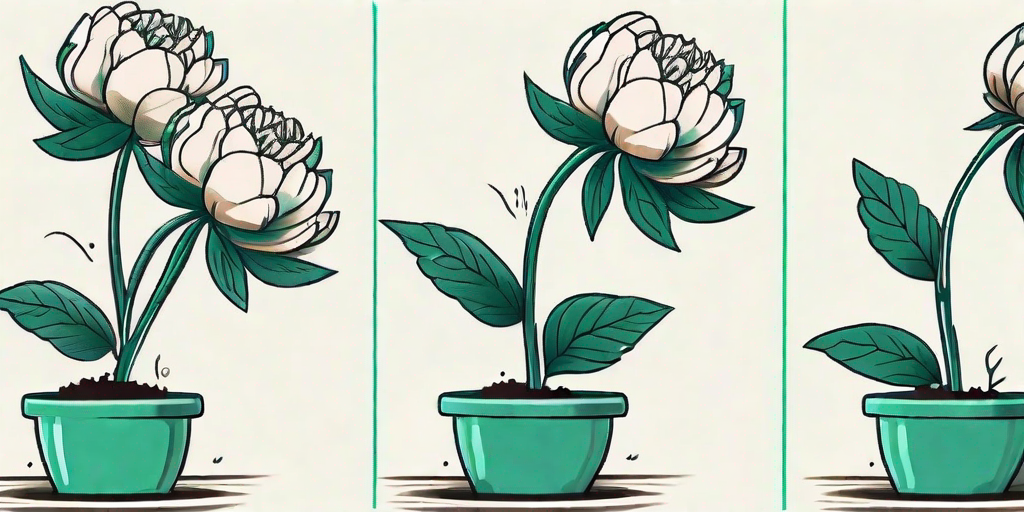
Peonies, those grand dames of the garden, are known for their lush, voluminous blooms and their stubborn, diva-like temperaments. But don't let their reputation for being high maintenance deter you. With a bit of patience, a dash of humor, and this guide, you'll be transplanting peonies like a seasoned gardener in no time.
Understanding Peonies: The Divas of the Garden
Before we dive into the nitty-gritty of transplanting peonies, let's take a moment to appreciate these beauties. Peonies are perennials that grace our gardens with their stunning blooms from late spring to early summer. They come in a variety of colors, from the classic white and pink to the more daring coral and black.
But peonies are not just pretty faces. They are also known for their longevity. With proper care, these plants can live up to 100 years, outliving the gardener who planted them. Now, that's what we call a legacy!
The Diva-like Temperament of Peonies
Peonies are known for their particularities. They don't like to be disturbed and can take a couple of years to settle in before they start blooming. But once they do, oh boy, they put on a show that's worth the wait.
Another quirk of peonies is their preference for cold winters. They need a period of chilling to bloom the following spring. So, if you live in a tropical paradise, peonies might not be the best choice for your garden.
Transplanting Peonies: The Main Event
Now that we've gotten to know our divas a bit better, let's get down to business. Transplanting peonies might seem like a daunting task, but with the right steps, it can be as smooth as a peony petal.
Remember, timing is everything. The best time to transplant peonies is in the fall, after the foliage has died back but before the ground has frozen. This gives the roots enough time to establish themselves before the winter chill sets in.
Step-by-Step Guide to Transplanting Peonies
-
Start by cutting back the peony foliage to the ground. This reduces the stress on the plant during the transplanting process.
-
Next, dig around the peony, taking care not to damage the roots. Aim to get as much of the root system as possible.
-
Once the peony is out of the ground, gently shake off the excess soil and inspect the roots. If you see any damaged or diseased roots, trim them off.
-
Prepare the new planting hole. It should be deep and wide enough to accommodate the root system without crowding. Add some compost or well-rotted manure to the bottom of the hole for a nutrient boost.
-
Place the peony in the hole, making sure the buds (also known as "eyes") are no more than 2 inches below the soil surface. If planted too deep, peonies will not bloom.
-
Backfill the hole, firm the soil gently around the roots, and water thoroughly.
Aftercare: Keeping the Divas Happy
After the transplant, your peonies will need some TLC to help them settle into their new home. Water them regularly, but avoid overwatering as peonies don't like wet feet. In the spring, apply a balanced fertilizer to give them a boost.
Remember, peonies are slow to establish. Don't be disheartened if they don't bloom the first year after transplanting. They are just taking their time to settle in, like any true diva would.
FAQs: Answering Your Burning Questions
Can I transplant peonies in the spring?
While it's possible to transplant peonies in the spring, it's not ideal. Peonies prefer to be moved in the fall, giving them enough time to establish their roots before the winter chill. Spring transplanting can delay blooming and stress the plant.
Why are my transplanted peonies not blooming?
Peonies can take a couple of years to settle in after being transplanted. If your peonies are not blooming, they might be planted too deep. The buds should be no more than 2 inches below the soil surface. Patience is key when dealing with peonies.
Conclusion: Embracing the Peony Challenge
Transplanting peonies might seem like a daunting task, but with a bit of patience and humor, it can be a rewarding experience. Remember, peonies are divas, and like all divas, they demand respect and care. But once they start blooming, they'll steal the show and make all the effort worthwhile.
So, roll up your sleeves, grab your gardening tools, and get ready to embrace the peony challenge. Happy gardening!















